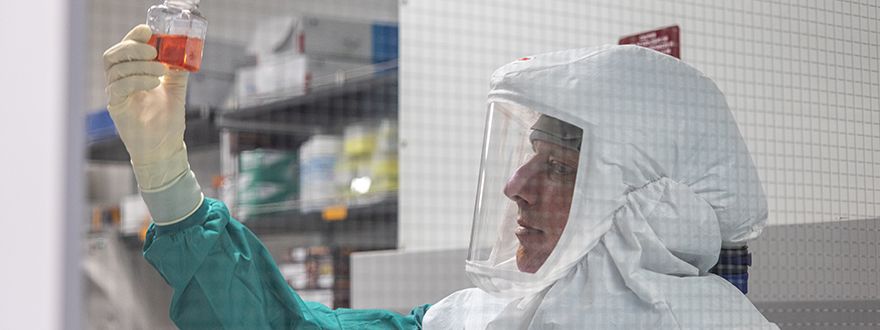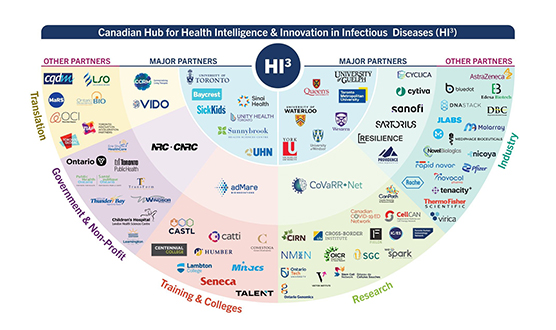Schulich Medicine part of new Canada research hub for pandemic preparedness
 Professor Eric Arts in the ImPaKT facility at Schulich Medicine & Dentistry.
Professor Eric Arts in the ImPaKT facility at Schulich Medicine & Dentistry.
By Prabhjot Sohal
With $2 million in federal funding from the integrated Canada Biomedical Research Fund (CBRF) and Biosciences Research Infrastructure Fund (BRIF), five new regional hubs have been established to prepare Canada for future pandemics and health threats.
Schulich School of Medicine & Dentistry is one of 80 partners in the Canadian Hub for Health Intelligence and Innovation in Infectious Diseases (HI3) created to support the development of life-saving vaccines and therapeutics and processes that target existing and emerging infectious diseases. Anchored at the University of Toronto, the HI3 will be a multidisciplinary coalition linking the resources of eight Ontario universities and six research hospitals with regional and national commercialization, biomanufacturing and pharmaceutical partners.

With its long-standing research programs in infectious diseases and contribution to vaccine development, Schulich Medicine & Dentistry is a crucial partner in HI3. The School recently received $16 million in federal funding to enhance the capacity of its state-of-the-art biocontainment level 3 (CL3) facility – Imaging Pathogens for Knowledge Translation (ImPaKT), which is located within the new Pathogen Research Centre (PRC).

Miguel E. Quiñones-Mateu, professor, Schulich School of Medicine & Dentistry.
“Western’s role in the hub leverages its strength in monitoring infectious diseases, developing and testing interventions to prevent the spread of diseases and therapeutics to treat them. With a strong network of research labs, hospitals and industry partners in Southern Ontario, Western is uniquely positioned to support the hub,” said Kevin Shoemaker, associate vice-president research (health) and professor of kinesiology.
Western’s participation in HI3 is currently led by Miguel E. Quiñones-Mateu, professor and Western Research Chair in viral pathogenesis at Schulich Medicine & Dentistry.
The hub will facilitate collaborative research projects with a focus on three main themes: Precision interventions, including vaccines and therapeutics; process innovations that utilize artificial intelligence (AI) to simplify and streamline biomanufacturing processes for use in areas that require them; and, health intelligence, which combines data from various sources to evaluate the effectiveness of interventions and ensure their equitable and efficient delivery for pandemic countermeasures.
The need for the research hub is born out of the lessons learned from the COVID-19 pandemic.
“It will ensure when the next pandemic hits, Canada is prepared. No country around the world wants to repeat what happened during COVID-19. This hub will ensure cooperation and sharing among institutions. It will also provide support for infrastructure and funding for research for the long term,” said Quiñones-Mateu.
The funding for HI3 is part of a larger investment in Canada's Biomanufacturing and Life Sciences Strategy, which aims to improve national pandemic preparedness and grow a strong domestic life sciences sector with cutting-edge biomanufacturing capabilities. In the second stage of the CBRF-BRIF competition, the coalition of partners will compete for $570 million in federal funding for research and infrastructure.
“Canada has the potential to be a leader in biomanufacturing and life sciences. We can foster the research needed to produce cutting-edge discoveries and products in our very own labs across the country. This funding for research, talent development and infrastructure projects is the foundation that will help us build a stronger, more robust domestic biomanufacturing sector in Canada that responds to the needs of Canadians for years to come,” said the Honourable François-Philippe Champagne, minister of innovation, science and industry for Canada.
The full text of the federal announcement can be read here.








